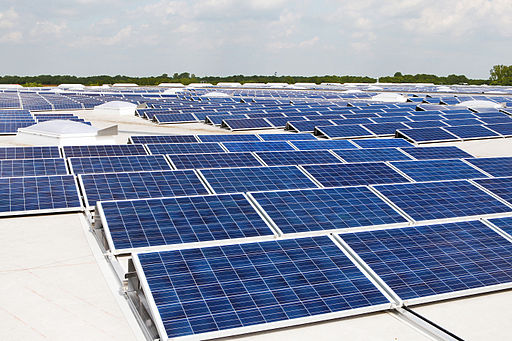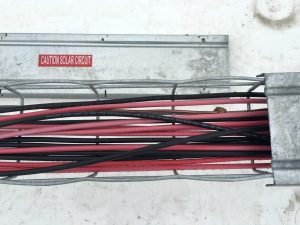Part 3 of A Special Message to Electricians: Saving an Electrical Industry in Decline

By: Jerry Durham | Apr 13, 2021
How Solar PV Can Save the Electrical Trade During a Recession
Part 3 of 3
Welcome to part three of this special three-part blog series.
This is our final look at how the solar photovoltaic (PV) industry, subsidized by the U.S. government, can lift the entire electrical industry out of the current economic slump.
If you have not read Parts 1 and 2 in this series, you can do so here:
How Solar PV Can Save the Electrical Trade During a Recession – Part 1
How Solar PV Can Save the Electrical Trade During a Recession – Part 2
Follow the Money
If you joined us for Parts 1 and 2 in this series, you already know that the electrical trade in the U.S. is suffering a serious setback. In March 2020, more than 600,000 construction workers were laid off or discharged as commerce and construction in the U.S. came to a halt. In April 2020, an additional 700,000 workers suffered the same fate. Fast-forward to 2021, and we find that brick and mortar stores are still limping along and many have closed their doors altogether.
Here is a glimpse of the store closures that occurred in 2020:
- GNC: 1200 stores
- Pier 1 Imports: 936 stores
- Gordmans, Bealls, Goody’s, and Peebles: 738 stores
- Men’s Wearhouse: 500 stores
- Add to that New York and Co., Game Stop, Kay Jewelers, Zale’s, Jared, Stein Mart, Bed Bath and Beyond, AT&T, Victoria’s Secret, GAP, Chico’s, JCPenney, and the list goes on.
These statistics would seem to signal that America has stopped shopping altogether. However, that is not the case. Instead, products and services moved to online platforms. Due to the low cost of conducting business online, analysts predict things are likely to stay that way.
What Do These Businesses Have in Common?
Other than the obvious, there is something else that all these brick-and-mortar stores have in common. In their demise, they reduced the demand for electricians. These businesses are no longer building new stores nor are they drawing up plans to expand or remodel existing locations. Most businesses in the U.S. are not in need of licensed electricians and it appears things will stay that way for some time.
What About Residential Work?
The residential side of our trade is not far behind. Residential construction is mostly bankrolled by revenue from businesses thriving before the pandemic, and that money is drying up. Until commerce returns to full swing, there is little money circulating for new construction projects.
Is There Light at the End of the Tunnel?
You will recall in Parts One and Two of this series, we established how the U.S. Federal Government has remained adamant about injecting hundreds of millions of dollars into green energy projects like solar. But what about the business of solar before a stimulus arrives?
It is interesting to note, even during the pandemic and the subsequent shuttering of businesses, one industry grew. The U.S. solar industry experienced a record year in 2020, as reported by the Solar Energy Industries Association. PV system installation experienced a 43% jump from 2019 according to the report, and that happened during a lockdown and without the current green energy incentives being formulated now.
Solar PV technology refuses to be squelched and is now the fastest growing renewable power source in the world. You can bet that solar PV systems for homes and businesses are on the radar for the federal government’s new green energy spending.
Since 2005, the federal government has offered thousands of dollars to home and business owners willing to take the solar plunge. Those rebates are winding down as new incentives are being evaluated. The former allocations in “Solar Tax Credits” will likely pale in comparison to the kind of numbers being talked about now. The U.S. government discussed investing as much as 1.7 trillion dollars for green energy spending. Whatever portion of that figure is allocated for solar PV system installations will be life changing for every contractor that is on-board.
Electricians in Demand

Licensed electricians will be in high demand! It will take licensed electricians to pull the electrical permits and to install all of the solar PV systems.
While many residential and commercial electricians prefer to keep solar PV technology at arm’s length, the solar PV sector and all the money that comes with it belong to you.
With an average solar PV system ticket of $10,000 to $25,000 per home, and even more for businesses, coupled with the federal government’s plans to pour money into incentivizing these installations, there is no better time to take advantage of this opportunity. The electrical trade is set, right now, to be the only construction trade in the United States that is growing while the economy tries to adjust to the new post-COVID normal.
How Do I Start?
Solar PV system installers are not a special group. They are electricians, like you and me, that learned how to install a PV system.
JADE Learning Will Prepare You to Start Installing Solar PV Systems!
JADE Learning has created a 4-hour video course explicitly designed to get general electricians who know nothing about the PV industry to a place where they are ready to begin a PV system installation. While it is impossible to discuss every aspect of every solar PV system in only four hours, JADE Learning’s electricians and inspectors selected all the key points of the technology and the installation procedure that are critical to your success, such as:
- overcurrent protection requirements
- conductor sizing and types
- approved connectors
- mounting the PV array
- grounding and bonding
This video-based course will get you where you want to be with solar PV system technology. There is nothing else like it on the market and there is no time like right now to take advantage of it. Remember, your success is our success. We serve electricians.
Click here to learn more and get started today!

